Netflix Algorithm: Everything You Need to Know About the Recommendation System of the Most Popular Streaming Portal
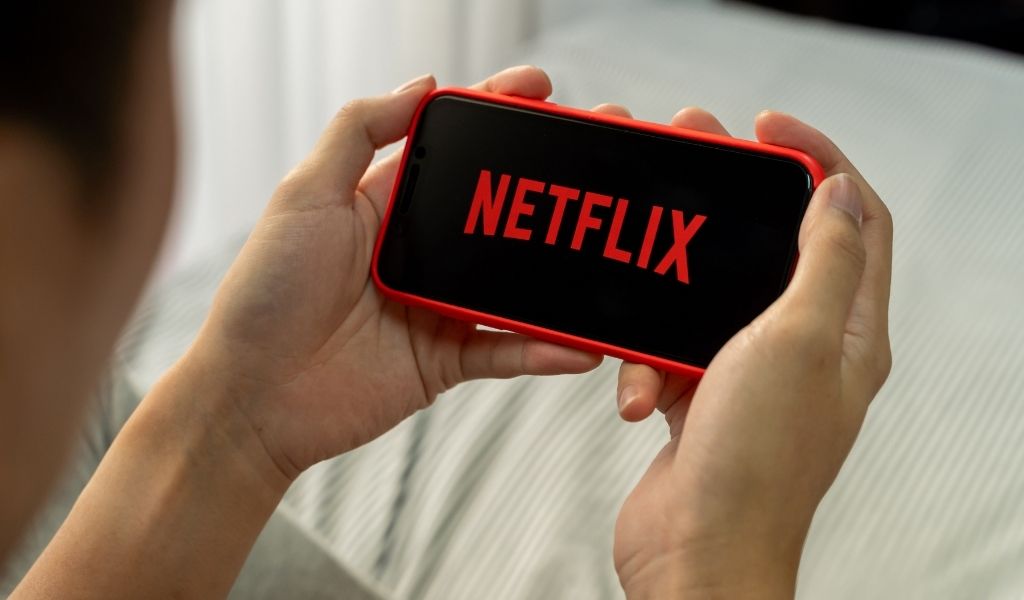
Currently, almost every user of streaming platforms expects that they will be able to understand their preferences and tastes and will suggest a movie or series that they will most likely enjoy. In other words - we are very used to the recommending algorithm.
That is why the largest platforms such as Disney +, Hulu, Amazon Prime or Netflix invest in the development of recommendation systems based on artificial intelligence.
Let's take a closer look at the content-based recommendation engine that is considered by many to be the best on the market. Of course, we are talking about the Netflix recommendation system.
We will answer the following questions:
- How does Netflix's recommendation system work?
- What is the Netflix algorithm?
- How does Netflix's recommendation system collect and use user data?
- How effective are Netflix's recommendations?
- How do other entertainment sites use recommendation engines?
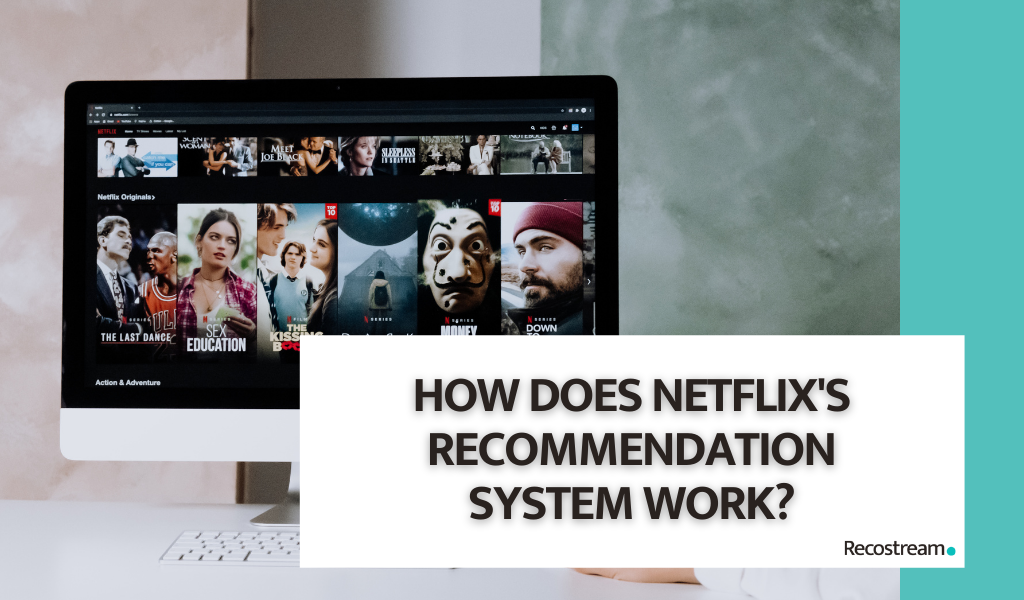
What is the Netflix algorithm?
The statistics speak for themselves, Netflix is the absolute leader among various streaming services.
In the year 2020 alone, Netflix gained over 37 million new subscribers, of which as much as 80% came from outside the United States. For example, the competing Hulu platform had only 36 million users in total.
Much of this success can be attributed to the recommendation engine, which constantly suggests new and interesting content while keeping users' attention.
Netflix currently offers thousands of movies and shows. Too much choice, however, may turn out to be overwhelming to most undecided users.
With over 15,000 different movies and series in the Netflix catalog, it is almost impossible for users to find the movies they like and find interesting by themselves.
This is where the personalized recommendation engine comes in handy.
This system is based on an algorithm that uses artificial intelligence and machine learning to offer users content tailored to their tastes and interests.
Beginnings: Netflix Prize 2006
The history of the Netflix recommendation system is over 20 years long.
In 2000, the company introduced the first groundbreaking personalized movie recommendations. In turn, in 2006, it created the Netflix Prize, a competition whose aim was to create a system of personalized recommendations based on artificial intelligence, in which the main prize was $ 1 million.
Although no one finally managed to obtain satisfactory results and a sufficiently low standard deviation of the set of recommended content, the participants' effort was not wasted.
It inspired thousands of teams around the world to further work and develop artificial intelligence algorithms, seeing the potential that this technology has for the entertainment industry.
Many experiences gained with Netflix Prize also contributed to the improvement of its recommendation engine, which in turn made it one of the best systems of its kind on the market.
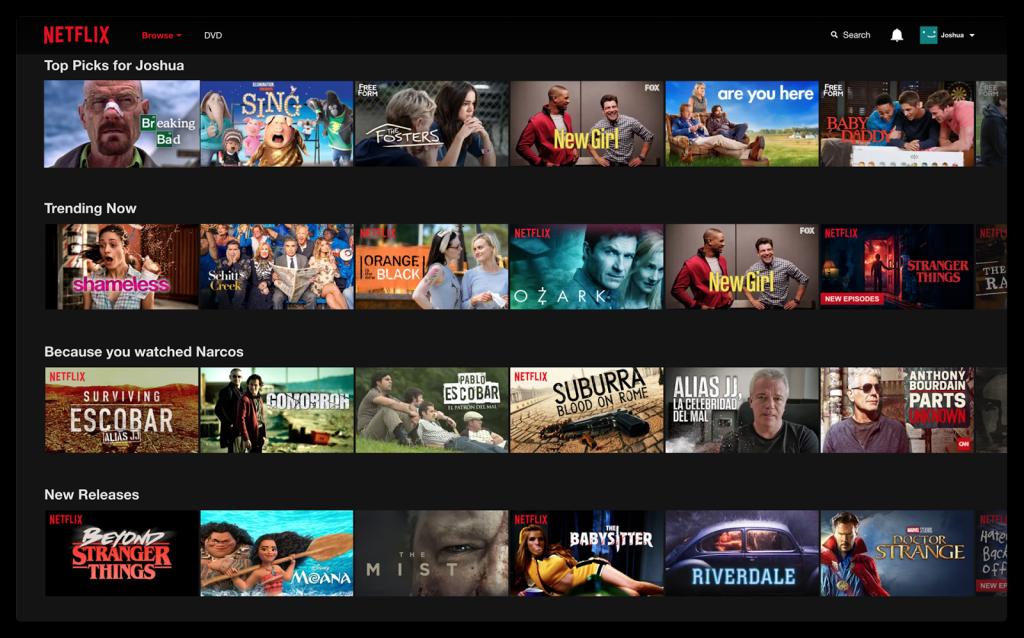
The layout of the recommendations is not accidental.
From the user's point of view, the first contact with the recommendation system takes place on the Netflix home page, where groups of films arranged in horizontal rows are displayed.
Each level includes movies and series from different categories:
- Selected for you - a list of movies and series selected specifically to meet the preferences of a given user based on their browsing history,
- Trending - a collection of content that is currently the most popular on the entire website,
- Similar to - a list of content similar to a series or movie that a user has clearly liked recently. The system confirms this, e.g. based on the time and frequency of watching episodes of a given series,
- News - newly added, interesting content that the website wants to promote to a larger number of potentially interested users.
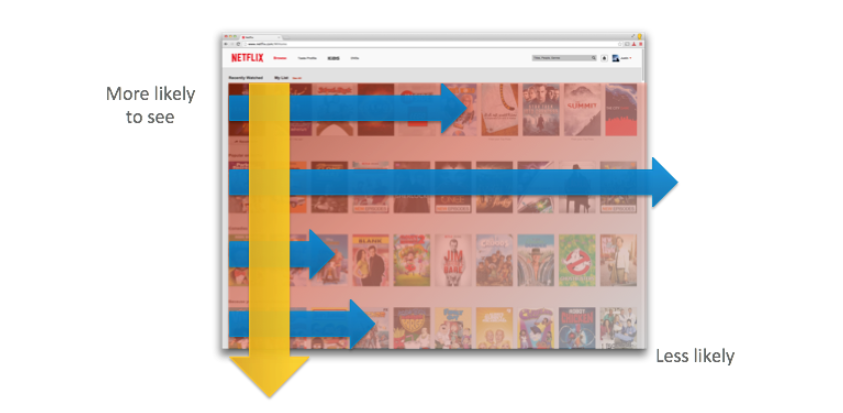
The arrangement of the thumbnails in rows is also not accidental.
Research has shown that users focus the most on the top left-hand side of the screen, so materials that are most likely to be selected by users are placed to the left of the recommendation rows.
All offered models provide Netflix users with a wide selection of movies and series tailored to their interests, from which they will surely be able to choose something for themselves.
How does Netflix's recommendation system work?
Netflix's recommendation system is the result of the work of hundreds of engineers over the last 20 years and a great example of the possibilities of artificial intelligence and machine learning in practice.
Netflix's recommendation engine consists of several important parts, each focusing on a different type of data and aspect of user behavior.
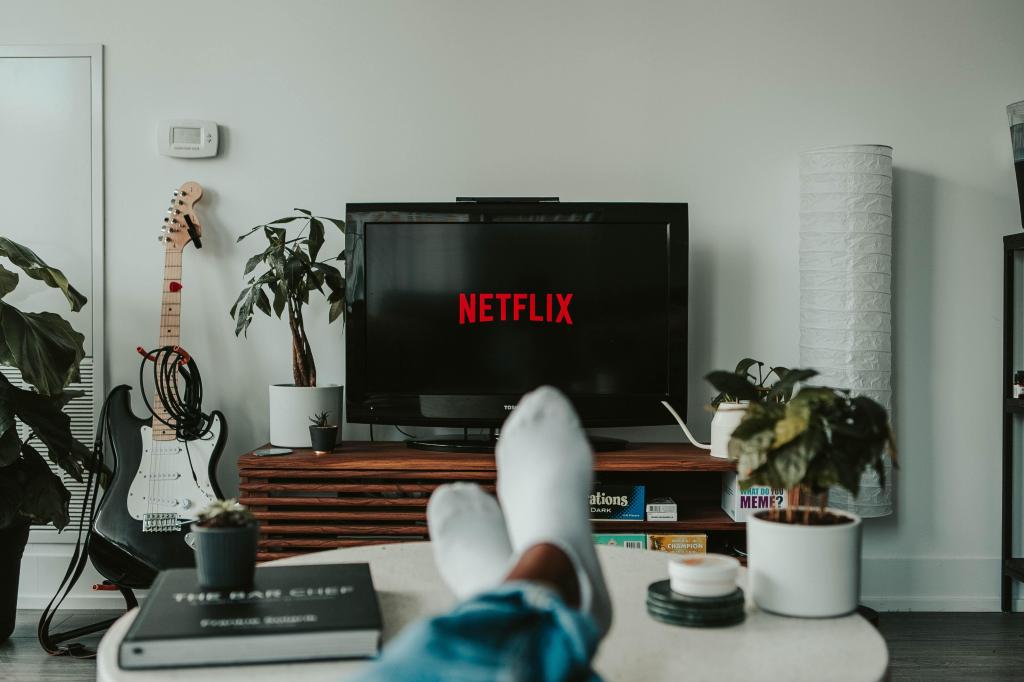
Netflix uses various models for filtering the available data, but based on published documents and the results obtained, as well as other similar recommendation engines, we can assume that it uses the 2 most important models:
- Content based filtering- it compares data on individual items, e.g. descriptions, comments or reviews,
- Collaborative Filtering- a model that tries to find the relationship between the behavior and preferences of individual users.
Netflix then sorts the filtered data using all sorts of rankings. Each of them corresponds to one of the categories (rows) of recommendations displayed on the main page of the platform.
So we can distinguish the following types of content-based recommendation rankings used by Netflix:
Personalized Video Ranking (PVR)
It is a general algorithm that segregates the content available in the catalog according to a given feature (e.g. Sci-Fi movies, romantic comedies, etc.), matching it with the personal preferences and tastes of a given user.
Top-N Ranking
Similar to the PVR ranking, however, it only takes into account the top rankings of individual users, which determine the most popular materials in a given category.
Ranking of interesting content for further viewing
This algorithm checks which content a given person has turned on but has not finished watching. The system then calculates the probability that a particular user will want to come back to them. It does this by analyzing the range of data available about it, as well as elapsed time since viewing, drop-off point, used device, etc.
Popular movies ranking
The algorithm analyzes what types of content is popular at the current time. It takes into account various types of time trends and other information that may indicate that content of a given type will be more willingly selected at this time. The most important predictors in the ranking of popular films include:
- Important world events (for example, the coronavirus pandemic contributed to the record popularity of a movie “Contagion”),
- Holidays and other occasions (for example, in February, during Valentine's Day, romantic comedies are very popular)
- user interactions with the website (browsing history and ratings issued);
- correlation data on the relationships and similarities between the tastes and preferences of individual user groups;
- information about the content available in the Netflix library, such as genre, length, language, actors, etc.
- Time of the day when individual users use the website,
- The type of device on which users view the content,
- Average viewing length.

Big Data: what data does Netflix use?
Netflix uses a lot of data from various sources to determine the likelihood of watching a given title.
This data applies to both the content in the catalog and information about individual users and their behavior and preferences.
The most important types of collected data include:
Furthermore, Netflix also uses additional information to better personalize the experience of its users.
The most important types of information include:
When talking about the types of data used by the Netflix system to generate content recommendations, it is also worth mentioning about completely new solutions.
Netlix's Latest Algorithm: Recommendations based on movie covers
The platform has recently introduced a completely new, innovative recommendation algorithm based on analyzing graphics.
Research shows that if a user on an entertainment platform does not find something interesting within 90 seconds, they will likely lose interest and look for another activity.
With such a short time to arouse interest, images become the most effective way to draw users' attention to interesting titles as quickly as possible.
The new Netflix algorithm, recently added to its recommendation engine, provides its subscribers with unique thumbnails of movies and series tailored to their tastes.
Netflix creates several thumbnail versions for each series or movie. Then, based on the data about users, it presents them with the one they will most probably find the most interesting.

In the example above, we can see how a Pulp Fiction movie can be offered to Netflix users with different thumbnails depending on whether the person has a lot of movies with Uma Thurman or John Travolta in their browsing history.
This makes it much more likely that a given user will pay attention to this movie.
This solution also applies to movie trailers and series..
A good example is the popular series House of Cards. If a user has a preference for movies and series with a strong female character, they will be presented with a trailer featuring mostly Robin Wright, starring in Claire Underwood.
In turn, those who like dramas of a political nature will see the main trailer with Kevin Spacey in the lead role.
Statistics show that Netflix's algorithm guarantees that even 90% of users will like the trailer and will be interested in watching the first episode.
How does Netflix know our taste in movies so well and what we want to watch?
Netflix uses artificial intelligence and machine learning algorithms to generate content recommendations.
The problem, however, is to offer movies and series to users about whom the system still has little information.
Due to this, Netflix asks each new subscriber to select the titles they would like to watch. These titles are used as the first step to personalized recommendations.
Later, as users continue to watch, over time, the recommendation engine begins to understand their preferences and tastes better, adjusting the list of featured content based on the data collected about them..
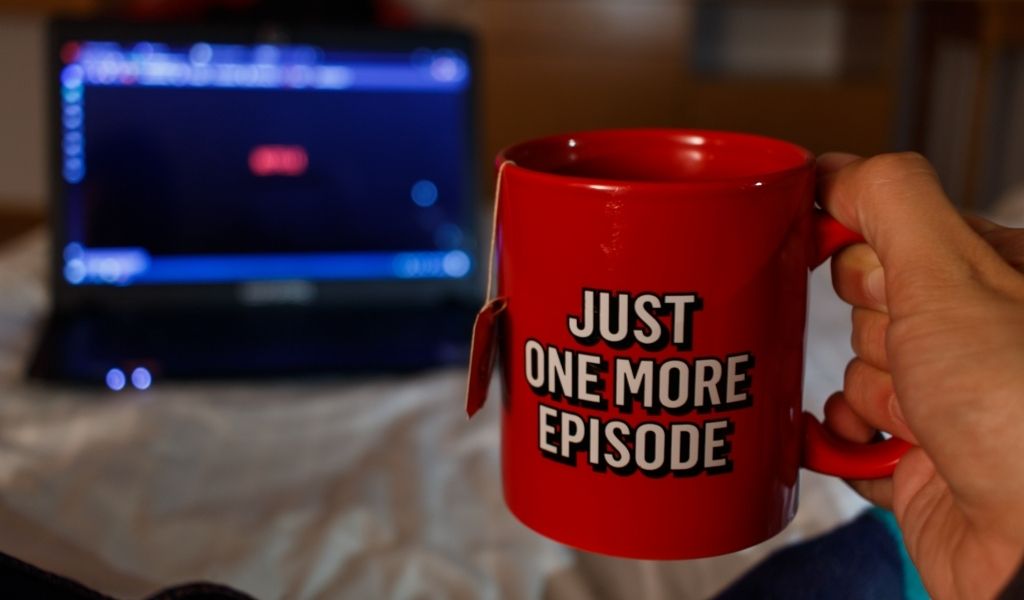
It is estimated that over 80 percent of the TV shows people watch on Netflix are discovered through the platform's recommendation system.
This means that the vast majority of viewers' decisions on the platform are directly influenced by the recommendation engine and its artificial intelligence algorithms.
What's more, according to the latest data, Netflix's recommendation engine saves the company over $ 1 billion annually.
Many streaming platforms such as Hulu and Disney + have their content-based recommendation systems, but it is the Netflix engine that turns out to be the most effective.
Statistics show that 47% of US residents prefer to use Netflix (with an impressive retention rate of as much as 93%). By comparison, Amazon Prime ranks second with just 14%, while Hulu and Disney + showed 13.6% and 13% respectively.
How Netflix predicts movie and TV series trends
An advanced product recommendation engine collecting terabytes of data on traffic on the site gives Netflix one more very interesting and unique advantage over its competitors.
It can predict trends much more effectively and produce original series based on the real preferences of users..
Original Netflix content is positively received by viewers in 93% of cases.
It is estimated that a television program on TV has only a 35% chance of success. This clearly shows that Netflix's choices for scripts that will enter a production phase are not random..

This is another advantage over classic TV that Netflix gets due to the implementation of artificial intelligence.
A great example of the effectiveness of this approach is the great success of the Netflix series Stranger Things. Again, the algorithm was in a way able to predict its success.
Based on the behavior of millions of users, Netflix was able to create a profile of people who might like the series and determine their number. Then, it was these people who received recommendations in the first place immediately after logging into the platform.
Recommendation engine in other streaming services
Other entertainment sites on the web, similarly to Netflix, can boast of impressive and surprisingly effective recommendation engines based on artificial intelligence and machine learning.
Spotify is undoubtedly such a service.
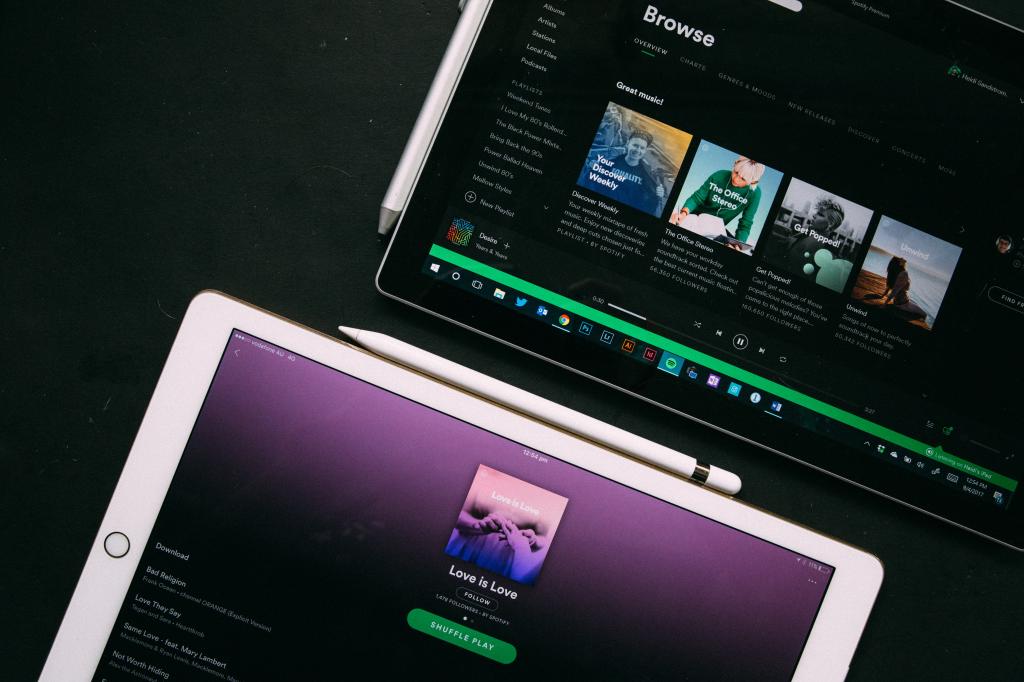
The Spotify engine, like Netflix, combines elements of various strategies and methods of data filtering used by models of various types to create one effective and comprehensive solution..
This system is responsible for creating a unique "Discover this week" playlist. It consists of 30 songs whose selection was based on the personal preferences of each user.
As it turns out, this playlist brings incredible benefits to the service. Within the five years since its launch, listeners have listened to over 2.3 billion hours of music offered to them via personalized playlists between July 2015 and June 25, 2020.
Another well-known site with an impressive recommendation engine is YouTube. YouTube recommendations are generated by Google Brain, which was recently released as an open source solution under the guise of TensorFlow.
The system consists of two neural networks responsible for various types of data filtering.
Similarly to Netflix and Spotify, the former filters user data to look for links between their tastes, while the latter sorts videos based on their characteristics and data, taking into account their ratings, number of views, comments, description and tags.

In 2011, the main ranking aspect was simply the total number of views.
As of 2012, total watch time has been the most influential factor in video recommendations.
In turn, since 2015, this audience engagement has been the major factor taken into account by YouTube's algorithms.
The effectiveness of YouTube's recommendation engine leaves no room for doubt. According to experts, most of the video traffic on the platform is generated by the recommendation system and not by organic search results.
Summary
Advanced recommendation engines can process terabytes of data to improve user experience and deliver business-relevant analytical data. It is the comprehensive use of data analytics and the use of artificial intelligence in practice that is one of the main reasons for Netflix's success.
Netflix's record results clearly show that taking care of user experience, personalization and machine learning are currently one of the most important trends in supporting and developing online activities.